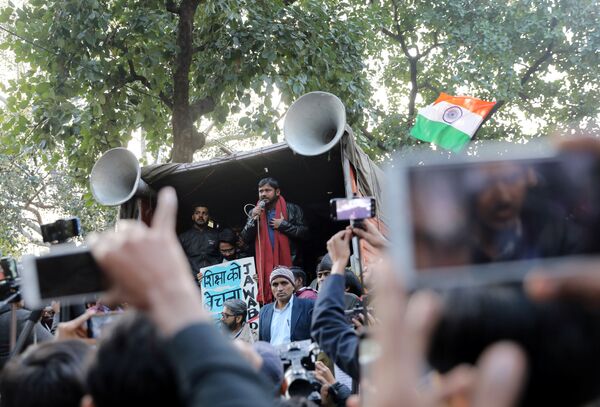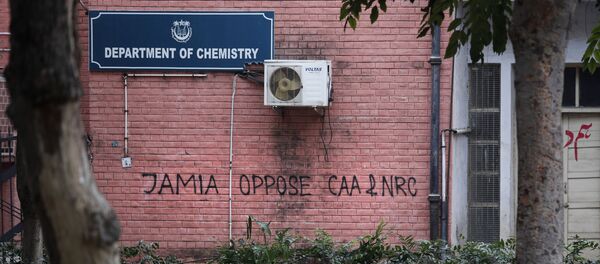The outbreak of the pandemic has presented new challenges to the at least 12 million Indians who enter the workforce every year, with job cuts across the board due to the economic slowdown in the country, which has left few places to induct them. On the fifth anniversary of the “Skill India” programme last week, Prime Minister Narendra Modi — who promised at least 20 million jobs every year if voted to power — echoed a sentiment similar to the one that industries have been claiming for years about the low level of employability of Indian graduates.
Recently, a Gurgaon-based researcher and entrepreneur, Sankrant Sanu, cited an incident regarding an interview with a pass-out from a government college with a bachelor’s degree in computer application who did not know coding. Sanu blamed the poor education system in the country for the low level of employability among Indian graduates, as, according to him, the girl he interviewed was a bright student, well-versed with theory.
Just did an interview of a student who did her BCA (Bachelor of Computer Applications) from a govt college in Gurgaon. It is a sad reflection of how the Indian State has actively worked to destroy Indian talent & education.
— Sankrant Sanu सानु संक्रान्त ਸੰਕ੍ਰਾਂਤ ਸਾਨੁ (@sankrant) July 8, 2020
3 years of college—and she never learnt to program. 1/
Claims made by education sector experts have support from different surveys, including as recently as in the Annual Employability Survey of 2019 by Aspiring Minds, which found that only 4.6% of job applicants possess good skills. 80% of Indians with engineering degrees are not fit for a job in the knowledge economy, while only 2.5% possess tech skills in artificial intelligence required by the industry, the survey claims.
Decades-old pedagogy and the mind-set of degrees and marks landing one a job will not work in the current market, which is ever-changing, says Sunil Goel, chief of Global Hunt Recruitment. “The world is moving towards virtualisation and technology, but not everybody has to become a technocrat. The need of the hour for the youth is to find their own passion and ideas, research the field they want to work in and develop their skill sets accordingly”, he says.
Ostrich Policy by Modi and His Predecessors
One of the obvious reasons for the low level of employability or graduates being low in skills is the lack of infrastructure, which affects practical knowledge. Economic Survey — a white paper on the economy presented every year in the parliament — suggests that the Narendra Modi government has cut the already scant allocation to education during his six years of tenure so far.
The expenditure on education by the Narendra Modi government fell to almost half (below 0.4 percent of GDP) in comparison to the Manmohan Singh government, which was spending over 0.7 percent until 2013-14. Nevertheless, it shows the country’s persistent neglect of education, despite a government committee named the Kothari Commission recommending that the education budget be around 6 percent of GDP to overhaul the archaic infrastructure of schools and universities.

As China’s state-funded institutes continue to do well, the Indian education sector has been corrupted by mushrooming private institutes. The extent of privatisation in India’s education sector is reflected in the figures of an All India Survey of Higher Education (AISHE) report, wherein 78 percent of colleges are in the private sector, in which 67.3 percent of all college students are enrolled.
The Narendra Modi government has decided to further privatise education and has been bringing campuses of foreign universities to India to enhance the quality of education. Besides, the Higher Education Financing Agency (HEFA) was also established to provide a “sustainable financial model for higher education with the objective to fund projects to the tune of $13 billion by 2022”.
Highlighting the two reasons for one problem in India, Rahul Kumar, national general secretary of the Rashtriya Lok Samta Party, talks about the northern Indian state of Bihar, where the recruitment of 100,000 teachers has remained pending for the past one year and resulted in a deteriorating education system.
The situation is similar in other Indian states like Rajasthan and Uttar Pradesh. The recruitment for 69,000 assistant teachers for Junior Basic Schools of the Primary Education Department is marred with corruption allegations at every level in Uttar Pradesh. Such instances are repeated in other states as well.
Rot Starts at the Root
India’s schools have been closed for over four months in an attempt to save children from COVID-19, but classes have continued. The governments at both the state and central levels have issued guidelines on the basis of which schools have resorted to different methods of distant teaching using technology.
Taking this into consideration, the Ministry of Education and Human Resource Development has also decided to make the draft of the New Education Policy, which has been under works for over six years, more technology-oriented, which will include more online and e-learning options at both the school and college levels.

Amidst the discussions of more technology-based education, the School Education Quality Index (SEQI) Report 2019 by NITI Aayog revealed how schools even in the best-performing states do not have computer labs. Local media reports have also highlighted how children from marginalised and poor families have been the hit worst, as they do not have access to smart phones or the Internet.
Taking the draft of the education policy into consideration, Panjab University Professor Dr Kuldeep Puri, who was a committee member for Punjab’s education policy, says “the draft tries to give this impression that we want to improve the standards but the details suggest otherwise. It is more of structural improvement that they are suggesting rather than improvement in the academics”.
The government believes that the quality of education is poor due to the top-heavy administration and that the solution for it is to make the institutes autonomous, he says. Going into more details of the draft, he shares that it wants to increase the gross enrolment ratio, but at the same time talks about decreasing the number of higher education institutes in the country.






